Related Research Articles

Cubism is an early-20th-century avant-garde art movement begun in Paris that revolutionized painting and the visual arts, and influenced artistic innovations in music, ballet, literature, and architecture. Cubist subjects are analyzed, broken up, and reassembled in an abstract form—instead of depicting objects from a single perspective, the artist depicts the subject from multiple perspectives to represent the subject in a greater context. Cubism has been considered the most influential art movement of the 20th century. The term cubism is broadly associated with a variety of artworks produced in Paris or near Paris (Puteaux) during the 1910s and throughout the 1920s.
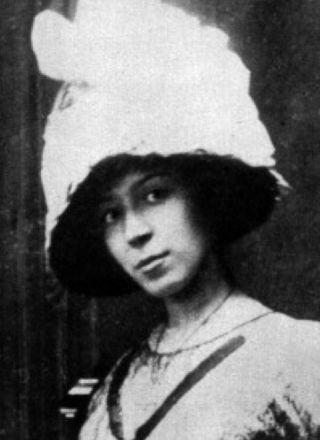
Marie Laurencin was a French painter and printmaker. She became an important figure in the Parisian avant-garde as a member of the Cubists associated with the Section d'Or.
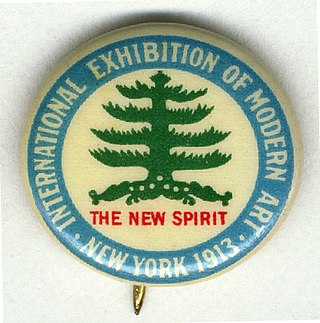
The 1913 Armory Show, also known as the International Exhibition of Modern Art, was organized by the Association of American Painters and Sculptors. It was the first large exhibition of modern art in America, as well as one of the many exhibitions that have been held in the vast spaces of U.S. National Guard armories.

Robert Henri was an American painter and teacher.
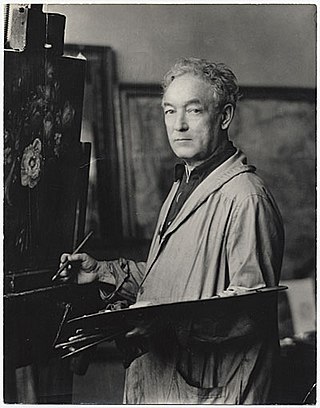
William James Glackens was an American realist painter and one of the founders of the Ashcan School, which rejected the formal boundaries of artistic beauty laid down by the conservative National Academy of Design. He is also known for his work in helping Albert C. Barnes to acquire the European paintings that form the nucleus of the famed Barnes Foundation in Philadelphia. His dark-hued, vibrantly painted street scenes and depictions of daily life in pre-WW I New York and Paris first established his reputation as a major artist. His later work was brighter in tone and showed the strong influence of Renoir. During much of his career as a painter, Glackens also worked as an illustrator for newspapers and magazines in Philadelphia and New York City.
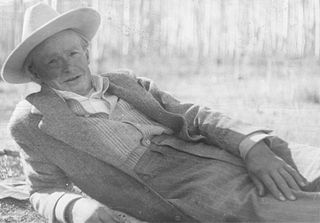
Andrew Michael Dasburg was an American modernist painter and "one of America's leading early exponents of cubism".
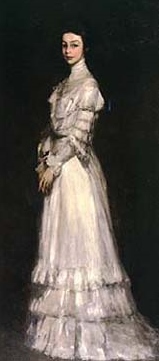
Edith Dimock was an American painter. Her work was exhibited at the 1913 Armory Show in New York. She married fellow artist, William Glackens, but continued to use her maiden name professionally after the marriage.
Bessie Marsh Brewer (1884–1952) was a Canadian-American printmaker, painter, sculptor and teacher. She studied at the New York School of Applied Design for Women and at the Art Students League with Robert Henri and John Sloan. She illustrated for Century, Phoenix, Collier's, and St. Nicholas magazines.
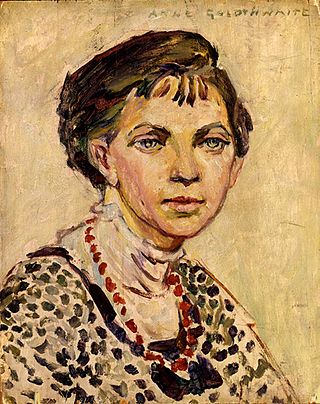
Anne Goldthwaite was an American painter and printmaker and an advocate of women's rights and equal rights. Goldthwaite studied art in New York City. She then moved to Paris where she studied modern art, including Fauvism and Cubism, and became a member of a circle that included Gertrude Stein, Henri Matisse, and Pablo Picasso. She was a member of a group of artists that called themselves Académie Moderne and held annual exhibitions.

Florence Esté was an American painter in oils born in Cincinnati, Ohio. She also worked in watercolors, pastels, and as an etcher and engraver. She was particularly well known for her landscapes, which were said to have been influenced by Japanese artworks and were noted for their "harmony of color". Her obituary in the New York Times referred to her as "one of the best known women landscape painters."
Amy Londoner was an American painter who exhibited at the 1913 Armory Show. One of the first students of the Henri School of Art in 1909. Prior to the Armory Show of 1913, Amy Londoner and her classmates studied with "Ashcan" painter Robert Henri at the Henri School of Art in New York, N.Y. One notable oil painting, 'The Vase', was painted by both Henri and Londoner.
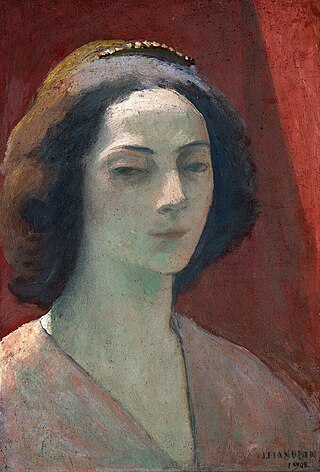
Jacqueline Marval was the pseudonym for Marie Josephine Vallet, who was a French painter, lithographer and sculptor.
Josephine Paddock was an American painter born in New York City. She earned a B.A. degree at Barnard College and studied at the Art Students League with Robert Henri, Kenyon Cox, William Merritt Chase, and John Alexander.

Hilda Ward (1878–1950) American Expressionist painter and author. She studied with Robert Henri and exhibited in the 1910 New York Exhibition of Independent Artists and the 1913 Armory Show. Ward also wrote A Girl and the Motor.
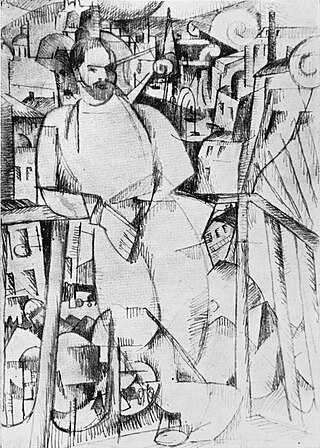
Man on a Balcony, is a large oil painting created in 1912 by the French artist, theorist and writer Albert Gleizes (1881–1953). The painting was exhibited in Paris at the Salon d'Automne of 1912. The Cubist contribution to the salon created a controversy in the French Parliament about the use of public funds to provide the venue for such 'barbaric art'. Gleizes was a founder of Cubism, and demonstrates the principles of the movement in this monumental painting with its projecting planes and fragmented lines. The large size of the painting reflects Gleizes's ambition to show it in the large annual salon exhibitions in Paris, where he was able with others of his entourage to bring Cubism to wider audiences.

Woman with Phlox is an oil painting created in 1910 by the French artist Albert Gleizes. The painting was exhibited in Room 41 at the Salon des Indépendants in the Spring of 1911 ; the exhibition that introduced Cubism as a group manifestation to the general public for the first time. The complex collection of geometric masses in restrained colors exhibited in Room 41 created a scandal from which Cubism spread throughout Paris, France, Europe and the rest of the world. It was from the preview of the works by Gleizes, Jean Metzinger, Henri Le Fauconnier, Robert Delaunay, and Fernand Léger at the 1911 Indépendants that the term 'Cubism' can be dated. La Femme aux Phlox was again exhibited the following year at the Salon de la Section d'Or, Galerie La Boétie, 1912. La Femme aux Phlox was reproduced in The Cubist Painters, Aesthetic Meditations by Guillaume Apollinaire, published in 1913. The same year, the painting was again revealed to the general public, this time in the United States, at the International Exhibition of Modern Art, New York, Chicago, and Boston. The work is now in the Museum of Fine Arts, Houston, Gift of the Esther Florence Whinery Goodrich Foundation in 1965.
Kathleen McEnery Cunningham (1888–1971) was an American painter.
Florence Howell Barkley (1880–1954) was an American landscape painter and illustrator best known for depictions of seascapes in oil and watercolor and illustrations in many popular newspapers in pen and ink. During this time, she was one of few women who was able to receive formal training in the arts. Although her most well-known work was created in 1912 and exhibited in 1913, her career was disrupted by World War I, and thereafter consisted mostly of freelance illustration work.
References
- 1 2 Wellesley College Record, 1875–1912: A General Catalogue of Officers and Students. Wellesley College. 1912. p. 209. ISBN 978-1-02-241953-7 . Retrieved January 19, 2016.
- ↑ "In the Art Schools". American Art News. 5 (31): 2. June 15, 1907.
- 1 2 "Gay Midwinter's Season". The New York Times. January 28, 1917. Retrieved January 19, 2016.
Mrs. Josephine B. Pope of New York last week announced the wedding of her daughter, Miss Louise J. Pope, to Henri Hourtal of Paris, which took place on Dec. 30, in the Church of St. Sulpice, Paris. The bride is a niece of Charles H. Pope, and after graduating from Wellesley College about nine years ago, went to Paris with her mother to study art. The bridegroom is with the French army in Morocco, and will return there after his leave of absence expires.
- 1 2 "Announcements of several weddings abroad which are of interest to Washington society have been made". The Washington Herald. January 29, 1917. p. 6. Retrieved January 20, 2016.
- ↑ Levy, Florence N. (1908). American Art Annual. Vol. 6. New York: American Art Annual (Incorporated). p. 401. Retrieved January 20, 2016.
- 1 2 Association of American Painters and Sculptors (New York, N.Y.) (1913). Catalogue of International Exhibition of Modern Art. New York. p. 51. ISBN 9785871491003 . Retrieved January 19, 2016.
{{cite book}}: CS1 maint: location missing publisher (link) - ↑ Clark, Carol (1992). American Drawings and watercolors. New York: Metropolitan Museum of Art New York [etc.] pp. 142–145. ISBN 978-0691032085 . Retrieved January 19, 2016.
- ↑ Levin, Gail (2007). Edward Hopper : an intimate biography. New York: Rizzoli. p. 71,596. ISBN 978-0847829309 . Retrieved January 19, 2016.
- 1 2 3 Shircliff, Jennifer Pfeifer (May 2014). Women of the 1913 Armory Show: Their Contributions to the Development of American Modern Art. Louisville, Kentucky: University of Louisville. Retrieved November 15, 2014.
- 1 2 "The Fine Arts: The Autumn Salon: Freaks are grouped by themselves". Boston Evening Transcript. October 3, 1912. Retrieved January 20, 2016.
- ↑ National Academy of Design Winter 1906. New York: The Knickerbocker Press. 1906. p. 55. Retrieved January 20, 2016.
- ↑ Levy, Florence N. (1914). American Art Annual. Vol. 11. New York: The American Federation of Arts. p. 229. Retrieved January 20, 2016.
- 1 2 "Second MacDowell Club "Group" Display". American Art News. 12 (4): 2. November 1, 1913.
- 1 2 Dennison, Mariea Caudill (2003). "Babies for Suffrage: "The Exhibition of Painting and Sculpture by Women Artists for the Benefit of the Woman Suffrage Campaign"". Woman's Art Journal. 24 (2): 26. doi:10.2307/1358783. JSTOR 1358783.
- ↑ Wardle, Marian (2005). American Women Modernists: The Legacy of Robert Henri, 1910–1945. Provo, Utah: Brigham Young university Museum of Art. p. 231. ISBN 978-0813536842 . Retrieved January 20, 2016.
- ↑ "Dr. Robert L. "Bob" Ticehurst Obituary". Asbury Park Press. November 6, 2009. Retrieved January 20, 2016.